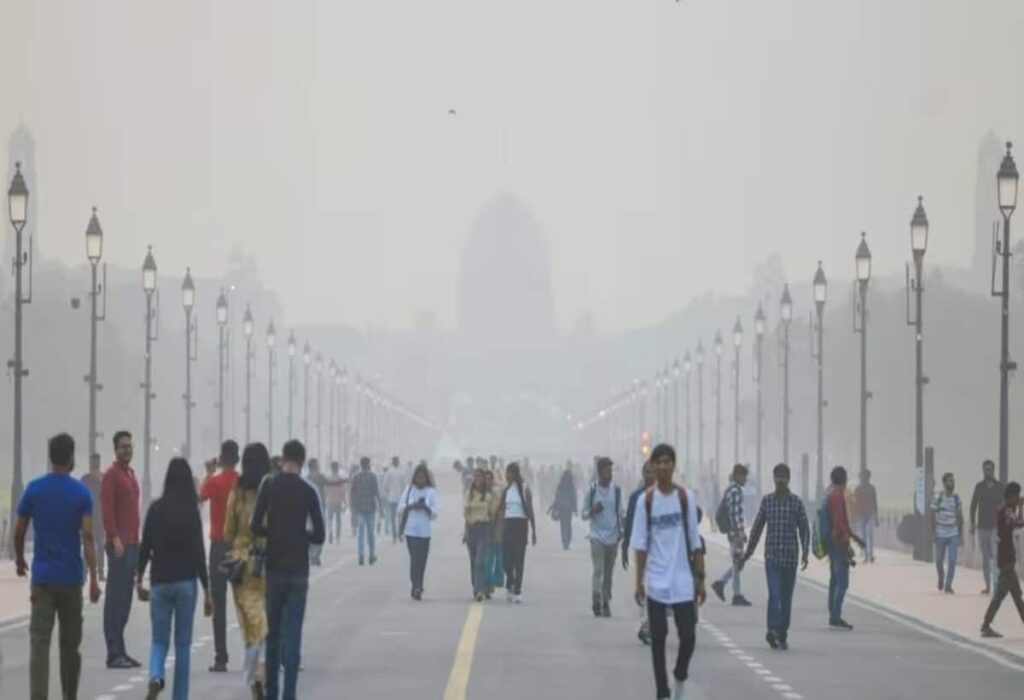“`html
Delhi, the national capital of India, is facing a significant challenge with rising pollution levels as the winter season approaches. With the festival of Diwali just around the corner, the situation has escalated to a concerning level, prompting urgent attention from authorities and citizens alike. Air Quality Index (AQI) readings have exhibited alarming figures, with levels recorded at 364 in ITI Jahangirpuri and 300 in the DIT Engineering area as of Sunday morning.
Understanding Air Quality Index (AQI)
The Air Quality Index (AQI) is a standardized system used to gauge and communicate the quality of air in a specific region. It is measured based on the presence of various pollutants including particulate matter (PM10 and PM2.5), nitrogen dioxide (NO2), sulfur dioxide (SO2), carbon monoxide (CO), and ozone (O3). Lower AQI values indicate better air quality, whereas higher values signify a deteriorating situation.
Current AQI Levels in Delhi
The recent AQI levels in Delhi reflect a dangerous trend. For a better understanding of the current situation, here is a brief overview of the AQI categories:
| AQI Range | Air Quality Category | Health Implications |
|---|---|---|
| 0-50 | Good | Air quality is satisfactory, posing little or no risk. |
| 51-100 | Moderate | Air quality is acceptable; however, there may be a risk for some people. |
| 101-200 | Unhealthy for Sensitive Groups | Members of sensitive groups may experience health effects, but the general public is less likely to be affected. |
| 201-300 | Unhealthy | Everyone may begin to experience health effects; members of sensitive groups may experience more serious health effects. |
| 301-500 | Very Unhealthy | Health alert: everyone may experience more serious health effects. |
Factors Contributing to Pollution in Delhi
Several factors contribute to the high pollution levels in Delhi, particularly during the winter season:
- Vehicular Emissions: The high volume of vehicles on the roads leads to significant emissions of nitrogen oxides and particulate matter.
- Construction Activities: Ongoing construction work in the city contributes dust and particulate matter to the air.
- Burning of Biomass: During winter, farmers often burn crop residues, which adds to the smog.
- Weather Conditions: Winter weather with lower temperatures can trap pollutants close to the ground, exacerbating air quality issues.
Impact on Public Health
High pollution levels affect not only the environment but also public health. Common health issues linked to poor air quality include:
- Respiratory problems such as asthma and bronchitis.
- Cardiovascular diseases due to increased strain on the heart.
- Worsening of pre-existing health conditions in vulnerable populations.
Measures to Combat Pollution
Addressing Delhi’s pollution crisis requires concerted efforts from the government, industries, and citizens. Some measures could include:
- Implementing stricter emission norms for vehicles and industries.
- Promoting the use of public transportation and carpooling.
- Increasing the green cover by planting more trees and creating parks.
- Encouraging clean energy sources and reducing reliance on fossil fuels.
Conclusion
The rising pollution levels in Delhi, particularly as winter and Diwali approach, pose serious health risks to its residents. The recent AQI readings above 300 highlight the urgent need for comprehensive strategies to combat pollution. Collective action from the government, industries, and the public is essential to improve air quality and safeguard the health of millions in this
